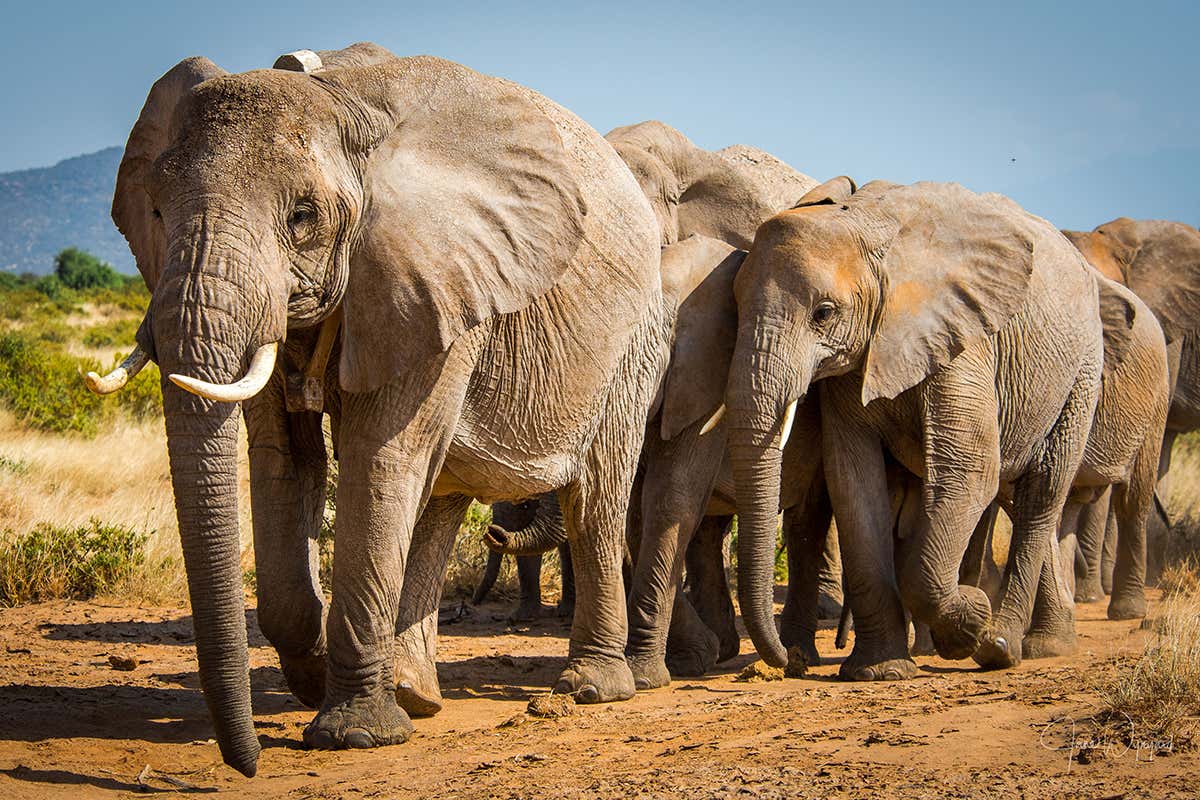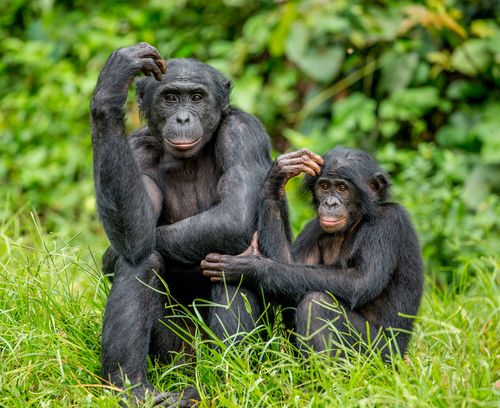
Forget the adrenaline rush of chasing lions across the savanna. Chimpanzee trekking offers a unique and intimate encounter. Imagine coming face-to-face with a creature that shares 98% of your DNA.
Witness these intelligent primates’ bond with each other, care for their young, and even goof around in ways that seem strangely familiar. It’s an unforgettable experience, making it no surprise that chimp trekking is a highlight for many Africa travelers.
Chimpanzees, however, are facing dwindling numbers. Research stations continue to document a decline in their populations, with estimates suggesting only 100,000 to 250,000 individuals remaining in the dense forests of Central and West Africa.
To protect these endangered animals, chimpanzee trekking is strictly regulated and requires planning ahead. This guide will tell you everything you need to know, from where to see chimps to permits and packing essentials.
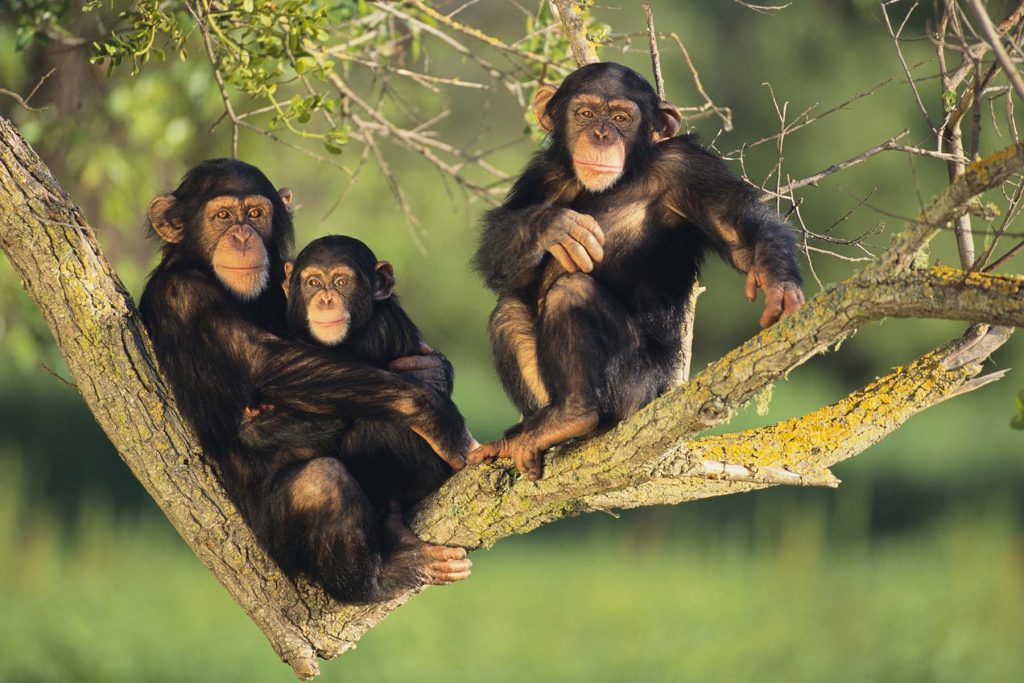
What is Chimpanzee trekking?
Chimpanzee trekking involves hiking into chimp habitat in Uganda, Tanzania, Rwanda and less commonly, the Democratic Republic of the Congo, with a local expert tracker and an armed ranger. Once a community is located, visitors are allotted one hour to watch the habituated chimps.
The adventure is designed for small groups, typically limited to six people aged 16 and above. You can choose a morning or afternoon departure, and the entire trip, including a pre-trek briefing, can take anywhere from two to six hours.
To ensure a minimal impact on the chimps, you’ll observe them from a respectful distance of seven meters (23 feet).
For those who crave a deeper connection, there’s even a day-long habituation program available. This option allows you to spend more time with the chimps and witness their complex social behaviors up close.
Where to go Chimpanzee trekking
Chimpanzees, unlike the animals you see on savanna safaris, live a hidden life high up in the rainforest canopy. While they aren’t exactly shy, spotting them depends on their schedule! You might find them right away, or it could involve a short trek.
The undisputed king of chimp trekking is Kibale National Park in Uganda. Here, an impressive 1,500 chimps call an area the size of New York City home! Divided into a dozen communities, four are habituated to human visitors, having been accustomed to them since 1993.
But Kibale isn’t just about chimps. This diverse park boasts over 120 mammal species, from playful baboons and monkeys to majestic elephants, and a staggering 370 bird species.
The park’s most popular trek is the Kanyanchu Primate Walk. Lasting roughly three hours, this group experience (limited to six participants aged 16 and over) offers a high chance (over 90%!) of encountering chimps. Departures are at 8 am, 11 am, and 2 pm, so you can choose the time that best suits your adventure.
Chimp Trekking in Uganda
Uganda shines as a prime location for chimp trekking and habituation experiences, boasting an estimated 5,000 chimpanzees. This makes it a dream destination for primate enthusiasts! The good news? Combining chimp trekking with gorilla trekking is totally feasible, allowing you to see both incredible primates on the same trip.
While Kibale National Park is a renowned chimp haven, there’s more to explore! Here are two other exciting options:
Budongo Forest: Nestled within Murchison Falls National Park, Budongo Forest offers another chimp trekking adventure. Here, 16 permits are issued daily, allowing two small groups of eight people (aged 15 and over) to encounter these fascinating creatures.
Kyambura Gorge: Queen Elizabeth National Park isn’t just about lions and elephants. Deep within its borders lies Kyambura Gorge, a dramatic ravine carpeted with trees. Here, a secluded family of habituated chimpanzees awaits those seeking an off-the-beaten-path encounter.
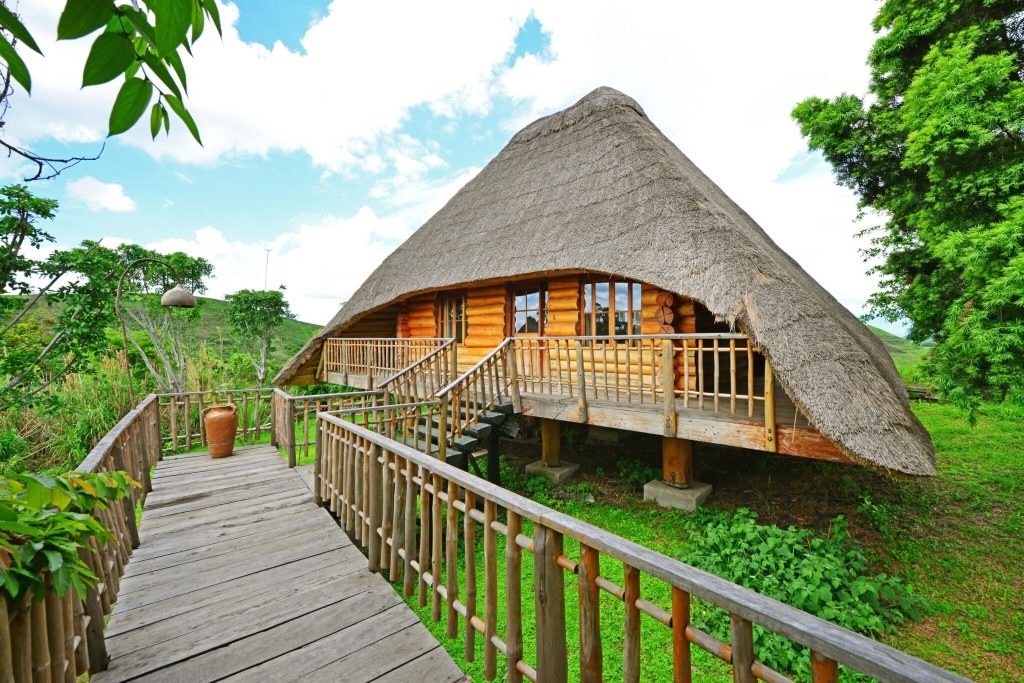
Chimp Trekking in Rwanda
Rwanda offers the best of both worlds for primate enthusiasts: gorilla tracking in Volcanoes National Park and chimp trekking in Nyungwe Forest National Park.
Nestled in the mountainous highlands of southern Rwanda, Nyungwe Forest shelters around 500 chimpanzees who call the dense canopy home. Two habituated troops await your visit! Treks are limited to eight participants aged 15 and over, led by a guide and an armed ranger (porters are optional).
Rise with the sun for your trek, as only one human group encounters each chimp troop per day. Observe these fascinating creatures for an hour, maintaining a respectful distance of seven meters. Remember, while not a technical climb, the altitude (up to 9,600 feet) might require some acclimatization for some visitors.
After your chimp encounter, unwind in style at the luxurious Nyungwe Forest Lodge. Imagine falling asleep to the sounds of exotic birds and waking up to the melodies of monkeys – 22 suites spread across five villas position you right amidst the rainforest canopy for an unforgettable experience.
Chimp Trekking in Tanzania
Tanzania offers two unique locations for chimpanzee trekking, each with its own special charm:
Gombe National Park: Channel your inner Jane Goodall, the champion of chimpanzees, in this intimate park. Accessible only by boat, Gombe is a pocket-sized paradise bordering the shores of Lake Tanganyika. Here, a community of around 95 chimps call the lush slopes and river valleys home. However, space is limited: visits are capped at one hour for groups of six, aged 15 and over.
Mahale Mountains National Park: For the adventurous trekker, Mahale Mountains National Park offers a challenging (but rewarding!) chimp encounter. Nestled along Lake Tanganyika, this park is accessible only by boat and lacks roads.
However, the payoff is exceptional. Mahale boasts around 800 chimpanzees, with roughly 60 individuals from the Mimikere group habituated to human presence. Here, trustworthy lodging like Greystoke Mahale (known for its barefoot luxury and excellent guides) facilitates treks.
Chimp trekking in Democratic Republic of Congo
The Democratic Republic of Congo offers a unique chimp trekking experience in Virunga National Park, Africa’s oldest national park and a UNESCO World Heritage Site.
This biodiverse rainforest boasts a wealth of wildlife, from majestic gorillas to chimpanzees. Chimpanzee habituation began here in 1987, but civil unrest forced the park’s closure for many years. Thankfully, it reopened in 2014, and habituation efforts continue with the support of the Frankfurt Zoological Society.
Virunga’s chimp treks prioritize a smaller group size, with a maximum of four people allowed per trek. Departures happen daily at 6:00 am.
Reaching Virunga often involves entering the DRC from Rwanda. Be aware that the park website acknowledges ongoing security concerns due to past conflicts and illegal activities. Extraordinary Journeys, a travel company, offers guidance on navigating the logistics and security situation.
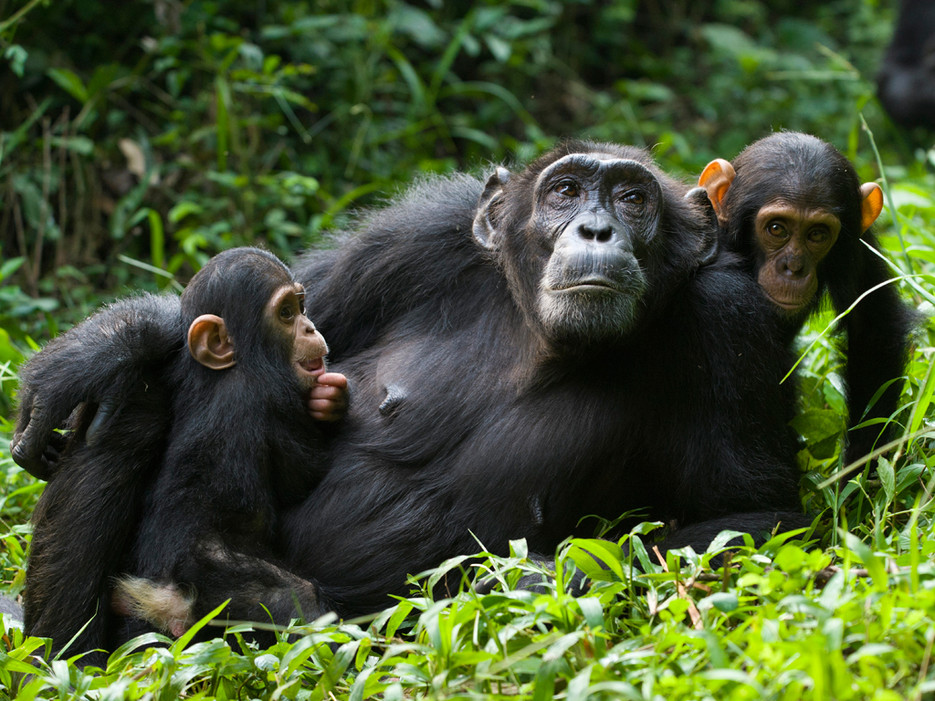
Interesting Chimpanzee Facts
Chimpanzees are like our wilder, hairier siblings! Sharing a whopping 98% of our DNA, they’re our closest relatives in the animal kingdom. These highly social creatures live in groups of 15 to 20, though some communities can be as big as 100 individuals. Each group has a unique personality, forming complex relationships and hierarchies – usually led by a dominant male.
But what makes them truly exceptional?
Smarter Than Your Average Animal: Chimpanzees are incredibly intelligent and communicative. They use a complex system of body language, hoots, pants, and barks to chat with each other.
They’re one of the few species known to create and use tools! Need to fish out some termites for lunch? Chimps will craft a handy stick tool. Cracking a nut? Rocks become makeshift hammers. Their knowledge is even passed down through generations.
These chimps aren’t picky eaters. Their diet is a mix of fruits, plants, insects, eggs, and even meat.
Physically, male chimps typically stand around four feet tall and weigh between 90 and 130 pounds. Females are a bit smaller, usually weighing 60 to 100 pounds.
So, next time you see a chimpanzee, remember – you’re looking at a distant relative with impressive intelligence and a knack for innovation!
Best time to go Chimp Trekking
Since chimpanzees live near the equator, the weather doesn’t change much throughout the year. So, the best time for trekking depends more on rain than temperature. Here’s a breakdown of the wet and dry seasons:
Dry Season (June-October)
Pros: Easier hikes on drier trails with less humidity.
Cons: Chimps may roam further in search of food, requiring longer treks to find them. This also coincides with peak tourist season, so expect more crowds and potentially higher permit costs.
Wet Season (April-May)
Pros: Fewer crowds and potentially lower prices.
Cons: Prepare for muddy trails and potentially rainy weather.
Tip: April and May offer a chance to avoid crowds during the rainy season. Just be prepared for potential rain showers – it’s a rainforest after all!
What to bring on a Chimpanzee trekking Safari
Here’s what to pack for your exciting chimp trekking adventure:
Must-Haves:
Small Backpack: Keep essentials close at hand during your trek.
Pack plenty of water and snacks to stay fueled throughout the day.
Camera with a Silent Switch: Capture unforgettable moments, but remember to turn off the flash to avoid disturbing the chimps.
Footwear for the Forest: Durable, lightweight, and waterproof hiking boots with good traction are crucial for navigating muddy trails.
Water-Resistant Jacket: Prepare for potential rain showers with a breathable, water-repellent jacket.
Layering Up: Pack clothes you can layer to adapt to changing temperatures and cool down after uphill sections.
Long Sleeves and Pants: Shield yourself from scratches and insect bites with long sleeves and pants.
Insect Repellent: Keep pesky bugs at bay with a good insect repellent.
Optional Extras
Gaiters or Tucked-in Pants: This helps prevent pesky safari ants from crawling up your legs.
Gardening Gloves: Protect your hands from stinging nettles with a pair of gardening gloves (optional).
Remember: Respect the environment and leave no trace behind. Pack reusable water bottles and containers to minimize waste.
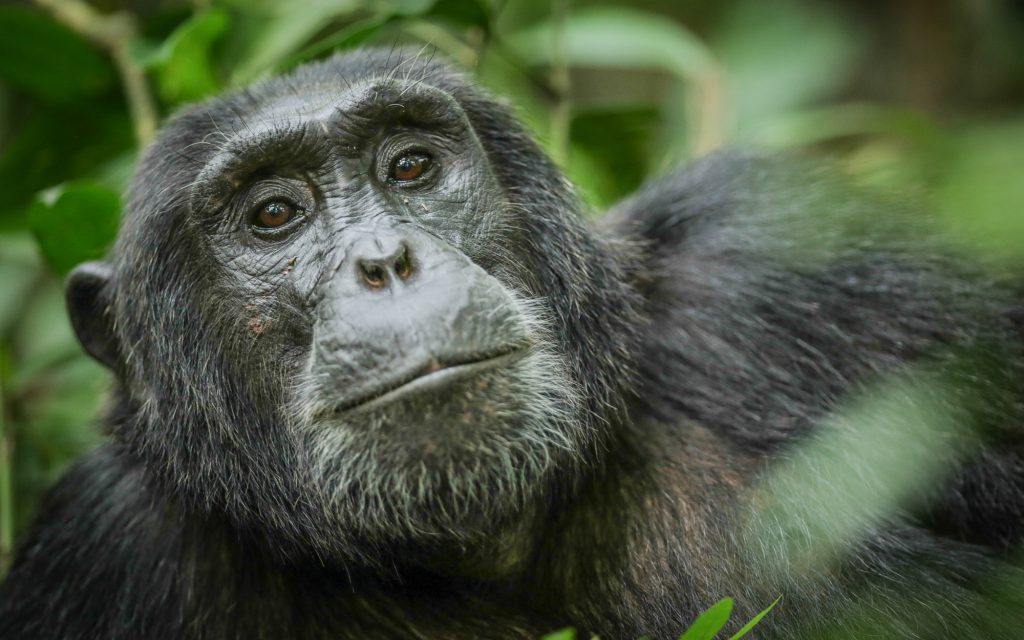
Tips to prepare for Chimpanzee trekking.
Permits must be booked in advance—a task that Extraordinary Journeys travel experts always take care of.
To prevent transmitting human-borne diseases to the chimps, anyone who is ill or demonstrating signs of illness is not allowed into the park.
There are minimum age requirements to go chimpanzee trekking. It varies by park but generally, youth must be 15 and older, in some cases 16. Many lodges have kid-friendly programming or childminding so parents with littles can enjoy a half-day trek.
Depending on the reserve or park’s policy, you will be expected to maintain at least seven meters (23 feet) distance from the animals.
To avoid negative attention, do not eat or snack near the chimpanzees
Listen to your guide at all times.
Trekking is limited to small groups. Depending on the park or reserve, some are limited to as few as four, most run at six, and others max out at eight.
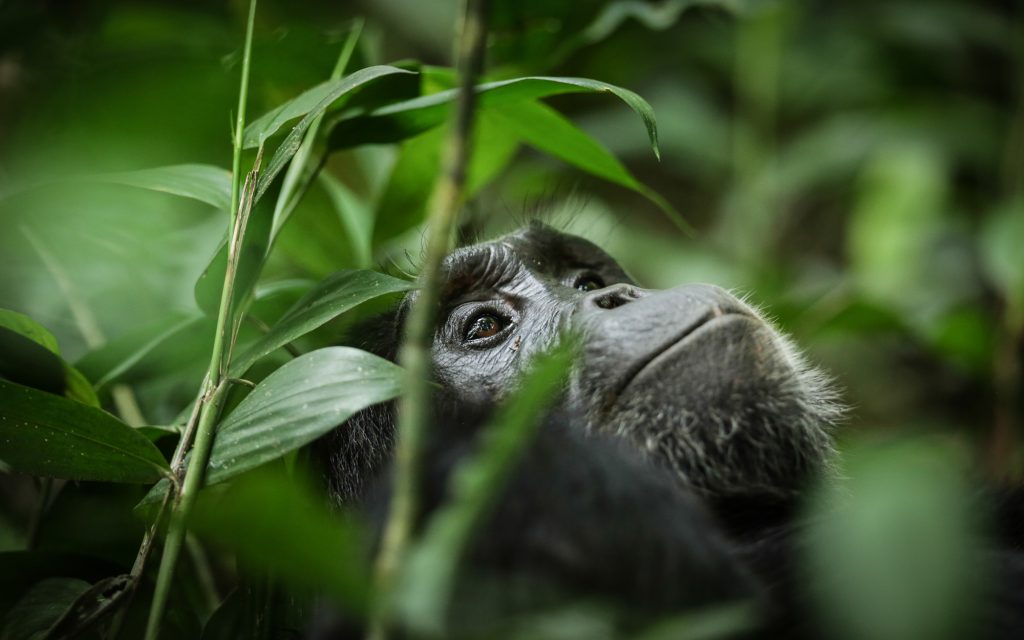
Chimp trekking FAQs
Is chimpanzee trekking safe?
You might be wondering if encountering wild chimps is safe. While they are indeed wild animals, here’s what puts your mind at ease
Chimpanzee treks involve visiting communities that have grown accustomed to human presence through a long process called habituation. Unlike unhabituated chimps who would avoid humans, these communities are familiar with park staff who visit them regularly.
Following your guide’s instructions and respecting chimp etiquette are crucial for a safe experience. This includes maintaining a safe distance, avoiding eating or smoking near them, speaking softly, and moving calmly.
All treks are accompanied by an armed ranger who can deter any unforeseen situations with a warning shot if absolutely necessary.
Chimpanzees themself aren’t the biggest safety concern. Here’s what to watch out for:
The biggest safety considerations for hikers lie in navigating the rainforest terrain. Watch out for stinging nettles and slippery mud on trails.
So, relax and enjoy the experience! Chimpanzee trekking is a safe and unforgettable adventure.
Are chimps friendly to humans?
Chimpanzees in movies and TV might seem like our playful pals, and some famous cases like Jane Goodall’s interactions might create the impression they’re friendly with humans. Here’s the reality:
Chimpanzees are, after all, wild animals. Habituation helps them tolerate human presence, but they aren’t domesticated pets.
Their intelligence allows them to recognize familiar faces, like park guides or rangers they see often. But for you, they’ll likely be indifferent, focusing on their daily lives as you quietly observe.
The ideal scenario is that the chimps simply ignore you, going about their natural behaviors while you witness their fascinating world.
SNTours



